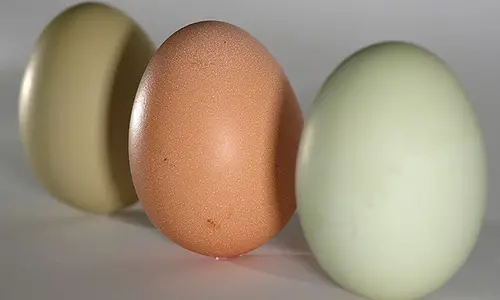1.Global Egg Production
About 1.2 trillion eggs are generated for consumption across the globe each year. An average person consumes about 173 eggs each year. Out of all the eggs produced globally each year, 40% are consumed in China. China produces the largest amount of eggs in the globe each year, about 390 billion eggs, about 50% of the global production. An average hen produces 250 to 270 eggs each year though some lay over 300 eggs.
2.World Record
Howard Helmer holds the world record for making omelettes. Within 30 minutes, he made 427 omelettes. In 2003, Sonya Thomas held the world record for consuming hard boiled eggs. She ate 65 eggs in just 6 minutes and 40 seconds and it is thought that she could have eaten more eggs if they had not run out.
3.Nutritious Foods
Eggs are nutrient rich, protein packed affordable foods that help people stay healthy and fit. The color of the shell does not reflect the nutritional value or quality of an egg. It is a reflection of the chicken breed that laid it. White feathered hens tend to produce white eggs while red feathered hens produce brown eggs.
4.Egg shell and egg white
The egg shell is made from calcium carbonate, a major ingredient found in some antacids. The egg white is mainly made from albumen, a protein and also has vitamin B3, niacin, vitamin B2, riboflavin, magnesium, chlorine, sodium, potassium and sulfur. Egg white carries 57% of all the protein in the egg.
5.Yolk Color
The color of the yolk in the egg is determined by the diet that the hen consumes. The more orange and yellow plant pigments in the grain that a hen feed on, the more vibrant the yolk color will be. The color of the yolk does not reflect the nutritional value of the egg. A dark yellow yolk means the hen feeds more on green vegetables while a medium yellow yolk shows a corn and alfalfa diet.
6.Color of egg whites
Egg white color varies with the age of the egg plus other factors. Cloud egg white means the egg is fresh while clear egg white means that the egg is aging. Iridescent or pink egg whites show that the egg is spoilt and the egg should not be eaten. Blood that appears on egg white means that tiny blood vessels have ruptured in the yolk and does not mean that the egg is unfit for consumption.
7.Egg Color Preferences
In the United States, white eggs are most preferred while in New England, brown eggs are most preferred. Each year, an estimated 75 billion years are laid in the US representing 10% of the world’s egg production. Out of this production, 60% are consumed by people while 9% are processed by food industries. The remaining eggs are processed in products like marshmallows, mayonnaise and cake mix.
8.Egg Formation
It takes approximately 24 – 26 hours for an egg to form inside the hen. A cell known as an ovum forms into a yolk within the ovary. This is also the place where Salmonella, a bacteria found in eggs, enters the egg. During ovulation the follicles rapture releasing the yolk into the oviduct. The albumen forms round the yolk as the yolk travels to the uterus and membranes are formed round the albumen. The egg shell forms inside the uterus and the egg is laid large end first. Egg formation process starts again 30 minutes after laying.
9.Dirt on Eggs
Dirt on eggs is not good even though it is organic. Chicken poo, dirt and feathers can contain salmonella, a harmful bacteria and it is important to do away with dirty eggs.
10.Pores on Egg Shells
Egg shell surface may contain up to 17000 small pores. The shell constitutes up to 12% of the eggs weight and has pores that enable oxygen to flow in and moisture plus carbon dioxide to get out.











Leave a Reply